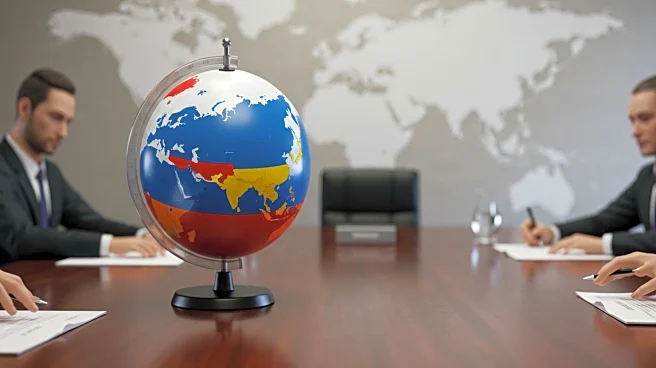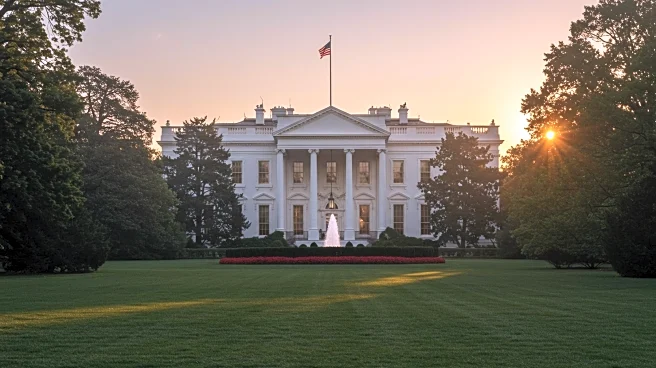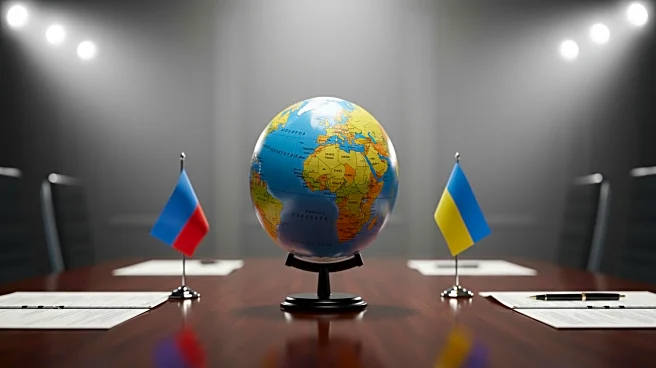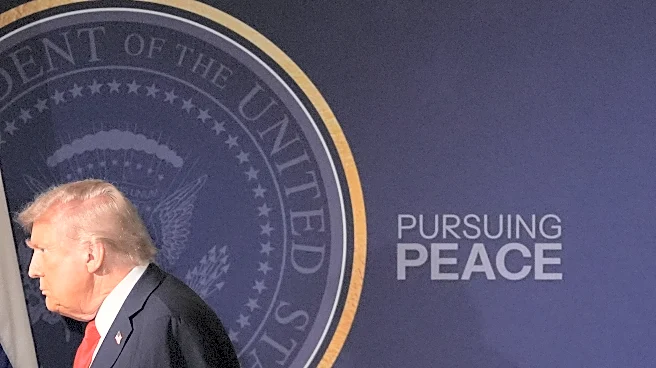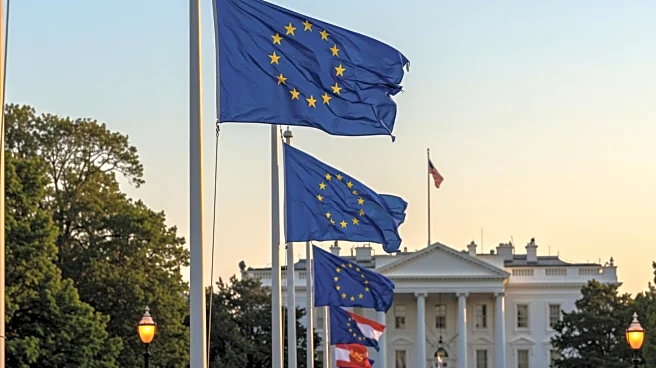What's Happening?
Artificial intelligence tools have been used to create fake images and videos that have clouded diplomatic efforts to end the war in Ukraine. These AI-generated contents include satirical depictions of President Trump and Russian President Vladimir Putin, such as dancing with a polar bear and engaging in a brawl. The disinformation has been spread widely, mocking European leaders as ineffective mediators during their meeting with Ukrainian President Volodymyr Zelensky at the White House. Fact-checkers have identified these images as AI-generated, highlighting the challenge of moderating false content on social media platforms.
Why It's Important?
The proliferation of AI-generated disinformation poses significant challenges to diplomatic efforts and public perception. It undermines serious discussions and negotiations aimed at resolving the conflict in Ukraine. The spread of such content can influence public opinion and potentially disrupt international relations. As tech platforms reduce content moderation, the rapid dissemination of false information can overshadow authentic news, complicating efforts to maintain transparency and trust in diplomatic processes.
What's Next?
The ongoing challenge of moderating AI-generated content may prompt tech companies to reconsider their policies on content creation and dissemination. Diplomatic stakeholders might need to develop strategies to counteract disinformation and ensure accurate representation of international events. The situation could lead to increased scrutiny of AI technologies and their impact on global affairs.
Beyond the Headlines
The ethical implications of AI-generated disinformation are profound, raising questions about the responsibility of creators and platforms in preventing the spread of false narratives. The use of AI in creating misleading content highlights the need for robust regulatory frameworks to address the potential misuse of technology in shaping public discourse.



